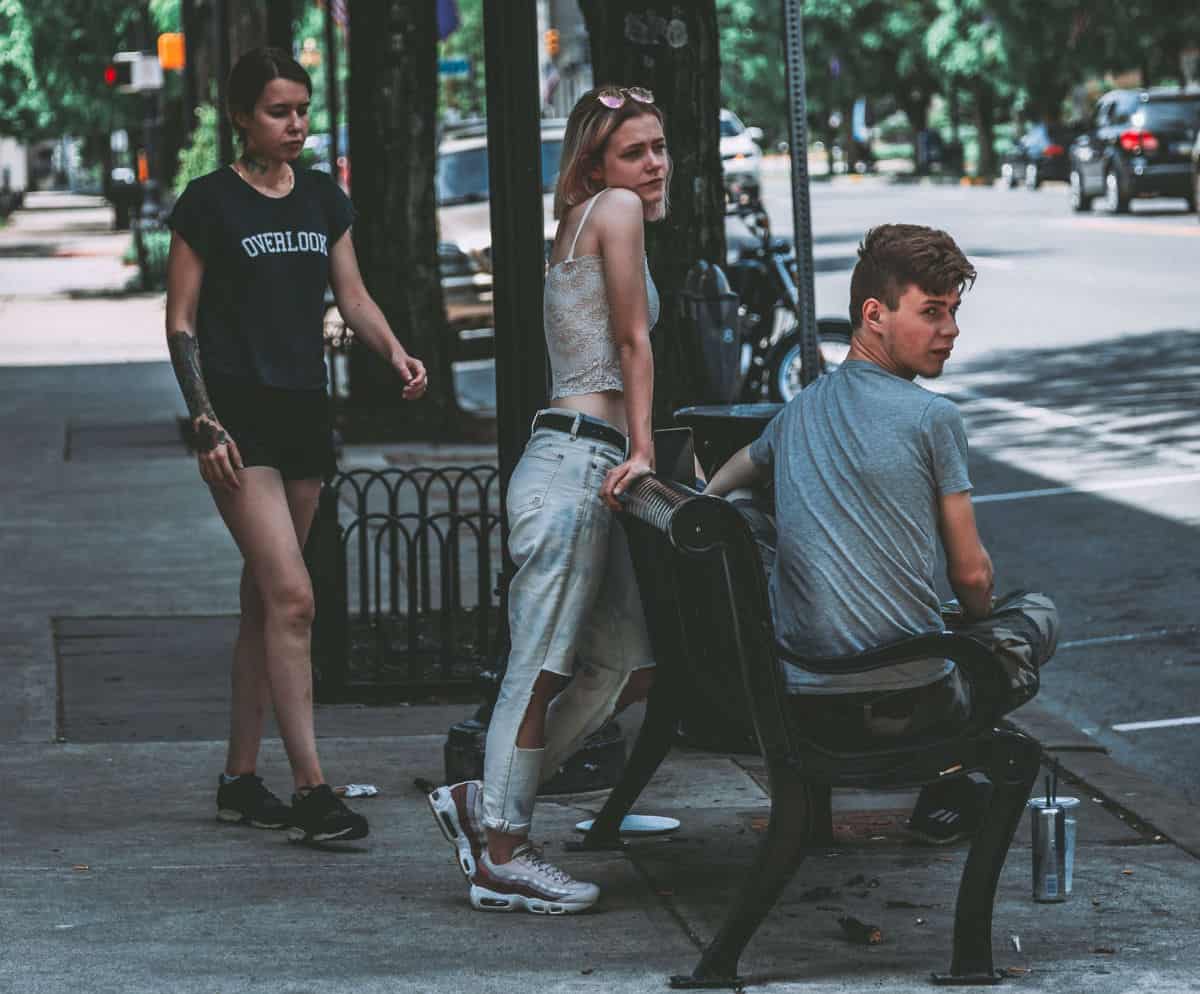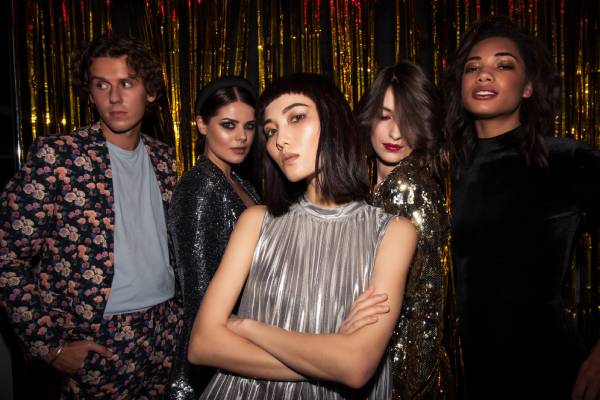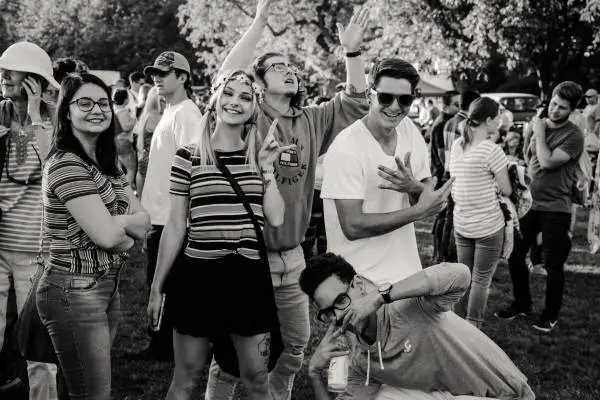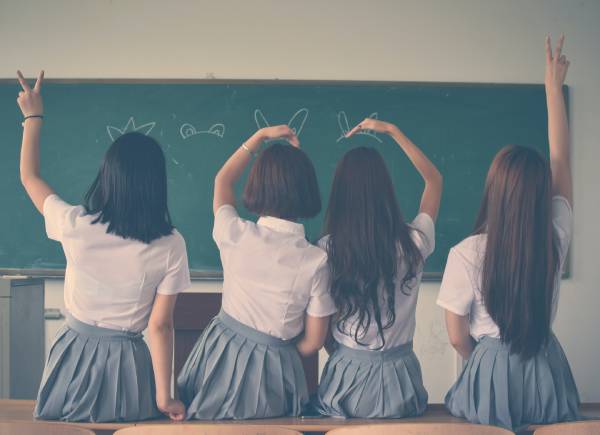Coming-of-age films in the late 90s and early 2000s often revolve around a list of high school cliques you can’t run away from. A jock falling for a nerd. An unknown trying to fit in with the campus queens. It has the perfect conflict material, and so these movies were absolute hits at that time because scenes reflect school dynamics, albeit exaggerated. Today we can still see strains of that truth here and there. But are schools still divided by high school stereotypes or is it a thing of the past? Read this article to find out.

Yes, there are still cliques.
No, the entire school population is not divided by stereotypes.
Confused? Let’s break it down in this list.
Table of Contents
The Famous Kids

First on our list of high school cliques is the circle of famous kids. Way back, the stereotypical famous kids are the jocks, cheerleaders, and Richie Rich kids among others. But as we compare it to its contemporary counterpart, the famous kids still include the rich kids, the jocks, and cheerleaders, but it’s not exclusive to them anymore. Anyone can be part of the famous kid club, depending on the standard.
With this generation’s excess social media engagement, there are a lot of students who are now labeled as social media celebrities. Their posts almost always go viral and they have thousands or even millions of followers. As a matter of fact, some choose to go full-time Youtubers, completely foregoing the idea of going to college or university. Students with this kind of reach and impact obviously belong to the Famous Kids Club.
And when these kids meet together and enjoy each other’s company, you might catch yourself saying, “Maybe popular people do tend to gravitate towards each other. Most probably.”
The Academically-driven Kids

Referencing some generic 80s teen chick flick movies, you see these kids dressed in tweed, wearing thick-rimmed glasses, and always carrying thick books that rival encyclopedias. People consider these students as those obsessed with their goals, often foregoing social gatherings and establishing relationships with others. We also see them as the receiving end of harsh jokes because of their stiff and rigid demeanor. And it’s pretty common for others to make fun of their focus and high goals. Now, this kind of thinking is admired because they already what they know in the long run.
Now, you can hardly be sure what clique a student belongs to in a list of high school cliques just because of what they wear. Or if they even belong to a social group in the first place. Contrary to their unfair cinematic portrayal, they establish social relations just as fine.
The Well-rounded Achievers and Go-getters

Another group of students who are circled together by the same drive and spirit is the well-rounded achievers and go-getters. What sets them apart from the previous faction is that they do not focus on academics alone. These students are THE model students. They aim to excel in academics, sports, and extracurriculars. They’re successful in their endeavors most of the time too. More often than not, they also become the automatic favorites of most teachers because of their involvement in school activities.
Together with the academically-driven group, they can and will most probably work together. They will work on group projects seamlessly. College entrance exams coming? Trust that they will huddle over books and reviewers together. Surely, in no time, they will all become a group of best friends.
Safe to say that coming and working together is what sets modern high school cliques apart from the past ones. Social groups are flexible. No one gatekeeps one group from another. Do you remember the main conflict in the first High School Musical Movie (2006)? And that cafeteria production scene where the students were insisting that those with multiple interests must stick and follow the status quo. No one does that anymore. The thin, almost non-existent boundaries across the social groups allow and encourage diverse friend groups.
The “Whatever-is-popular” Kids

Do you ever notice groups of friends who suddenly become tight-knit because of particular trends? May it be anime, Korean dramas, current Netflix shows, or even games, these social groups slowly build around this interest and will slowly intertwine with their personal lives. Some examples of these groups are the anime and manga enthusiasts. These forms of Japanese animations and storytelling are one of their main sources of entertainment. They might bond over watch parties during new episode releases, buying anime merchandise, and talking about the latest anime chapter updates and whatnot.
If we compare this group to the list of older high school cliques, these students might be stereotyped as geeks, weirdos, and nerds. This stereotype is brought about by their preference which most people were not familiar with yet. But now, it’s a completely different story. Now, they might be seen as quirky and someone who knows their preferences when it comes to their hobbies and pastime leisures.
The Kids who Live and Breathe Social Media
One notable element that differentiates the current generation from all the others is the so-called “influencer culture” that capitalizes on the current excessive use of social media. The rise of the popularity of the so-called “influencers” also lure more people into spending more hours online. Thus, we have another friend group who spend time on campus and even more time on social media.
The connection they build can rival an entire day. What’s unique about them is that what they talk about at school mirrors what they saw on Facebook the night before or that now-famous Twitter thread that they followed even before it got a huge following. They dedicate most of their time to social media pages and applications.
And since they consume the same material and content, naturally, they gravitate towards each other. It’s not like they don’t know how to socialize personally, they just prefer not to. When you see them in groups, they most likely have their phones in their hands and gestures most of the time. For them, it’s neither rude nor disrespectful. It’s just how they communicate.
The Kids who Speak the Meme Language

Now, let’s get to know another social group that also bonds over social media content, more specifically internet memes. Memes are a thing of the new generation. An internet meme is defined by the Merriam-Webster dictionary as an amusing item, often captured or generated, that spreads widely through social media. Snippets from movies or from every day can be transformed into memes overnight and it knows no boundaries. Several national leaders have fallen victim to the meme culture.
With its prevalence in everyday social media interaction, it comes to no surprise that the meme culture slithers down to everyday lingo. If you are new to the whole back and forth of meme references, you might feel lost and overwhelmed when you strike a conversation with this group. But the good news is, you only need a few hours in the right parts of the internet to catch up with the current meme hype. Although, once you start riding the wave, you need to continually catch up. Don’t worry though, the fun is always worth it.
These kids are the main meme dealers in their school. For sure, they have piles and piles of meme folders that hog up their phone’s memory storage and they’ll claim that it’s all worth it.
The “Woke” Kids
This generation’s high regard for education and learning, in general, resulted in another set of social groups in school—the woke kids. Often painted in a negative light, the woke kids are those who do not shy away from engaging in current social issues that are mostly controversial and are subjects of multiple debates. The negative perception about these kids often stems from their highly different or completely opposite view from what is traditional.
But, as we see now, it doesn’t stop them even a little bit.
When you first think about this clique, you might imagine them as a group of student debaters who are always in the middle of a heated debate. But, in actuality, they are a hodgepodge of kids who casually share their ideas in mundane conversations. They are also the kids who easily bring up said topics in casual conversations, over meals, or over random bonding moments.
The “Everybody wants to be their friend” Kids

These are the kids who exude particular energy that just draws people in. Maybe it’s in their smile or in their eyes, or in the way they talk, but somehow, other students on the campus want to be their friend or an acquaintance. They’re not exactly part of the Famous Kids Club; they don’t exactly draw an “I want to be like them” vibe from other students. These kids just give off positive vibes that make others interested in them.
Compared to classic high school movies and dramas, they are the kids who know someone from any friend group. Even if you place them in awkward situations with strangers, they ease their way in and establish connections easily.
The Infamous Kids
Last on the list of high school cliques, let’s get to know that one group that is known all around campus for all the wrong reasons, admittedly the worst stereotype to embody. Someone had a squabble with a teacher? It might be someone they know. Did the administrator’s office call someone for breaking unreasonable school rules unapologetically? It may very well be a student who is part of the Infamous Kids Troop. To be infamous, one must acquire fame through unconventional means.
If we go back in time, the infamous groups in high school settings are those who blatantly disregard modest dress codes and those who are caught bringing sticks and packs of cigarettes at school. People may even catch them red-handed, jumping over school fences to cut classes. Most often regarded as rebellious, these are the kids the entire school community and the teachers most especially know.
These so-called infamous kids in schools right now are not exactly ill-mannered or bad influence towards other children. They somehow get this label because they go against the rules and expectations set by the institution. That’s why they frequent trips to the administrator or prefect’s office.
You May Sit With Us

“You can’t sit with us”
Remember that resounding line by Regina George from the 2004 film, Mean Girls?
That line alone shows how difficult and seemingly impossible it was to mingle with other kids that are outside your “official” circle. But now, school cliques and categories listed here are nothing more than mere generalizations and approximations of the cliques that have evolved due to the new movements of this present generation. It also goes without question that there are more tight-knit groups that are present and may have the qualities of all the cliques mentioned above. And that’s the beauty of the school cliques of the Generation Z students. When it forms, it knows no bounds, but when it’s established, it protects those who are already inside.
Now, you can’t hear anyone say that you can’t sit with them.
You’ll hear more “Yeah, sure, you can sit here.” followed by a “Invite your friends over too.”
With a large student population in schools, it’s not impossible not to have smaller and more cohesive cliques or friend groups. We have seen the traditional school cliques in older teenage movies we enjoyed so much. Now, we witness how these groups evolved. From the traditional famous kids’ crew down to the newer “woke” kids friend group, it’s never too late to know how each group operates differently from the others.
